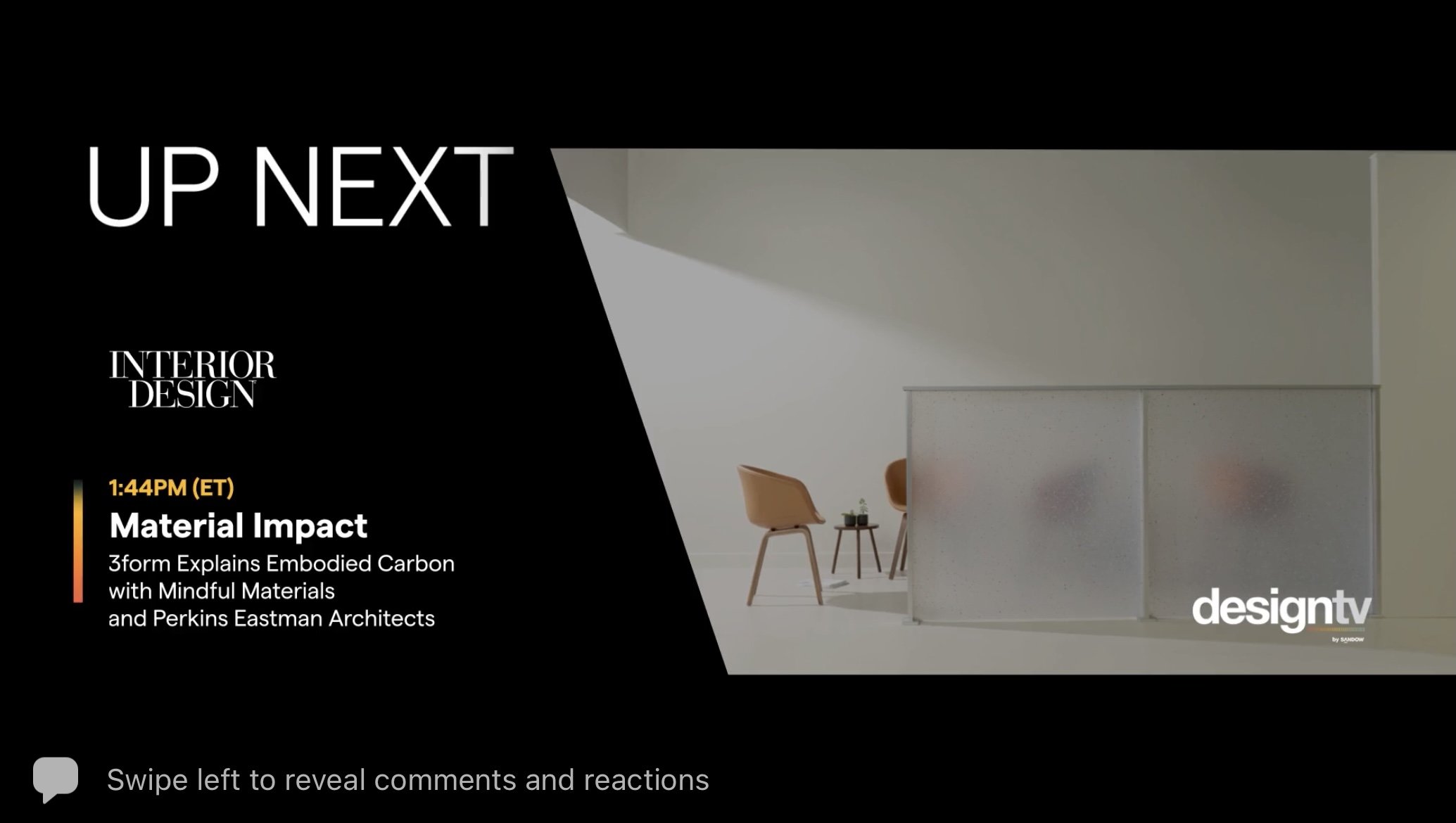interior design magazine: material impact
October 25, 2021
interior Design and 3form share their collaboration, Material Impact: 3form Explains Embodied Carbon with Mindful Materials & Perkins Eastman. produced in partnership with 3form.
From your perspective as an interior designer, why should embodied carbon impact the design choices that we make?
“There was some recent research conducted by the Carbon Leadership Forum that actually indicates that interior designers may be responsible for emissions at least equal to those associated with the structure and the envelope of the building, which is where, in the A&D realm, a lot of emphasis around carbon usually focuses on. As interior designers, we specify a lot of stuff. And all of those items and materials that we specify have a lot of embodied carbon built up into that. This is really a phenomenal opportunity for interior designers to be a leader in this aspect and to drive the demand to focus on embodied carbon in our projects and in the products that we’re specifying. It’s really no longer a case of taking too much time necessarily to find or specify products.”
As an interior designer, how can you be part of the solution?
“I’d like to highlight three different ways that we can, as interior designers, through various relationships, really contribute to that. First and foremost, thinking individually, what you as as an interior designer can do. Where it really starts is by purposefully prioritizing. You have that power. You’re selecting these materials. You can decide what options you want to consider and what options you want to show to your client. You have the opportunity during construction to not allow regrettable substitutions that are being placed into the project maybe because your original specification has a long lead time or has been discontinued. So not allowing some of these products that might be cheaper, faster, but might not be healthier from an environmental or human health standpoint. And then of course, advocating for reuse as much as possible.
The second way is through you as an individual at your firm. For example, Perkins Eastman has started various initiatives such as creating a matrix for vetting products that contribute to human and environmental health. As an individual at your firm, you can encourage signing the AIA Materials Pledge. Perkins Eastman has also contributed to a letter to the Biden Administration for Build Back Better, which we are extremely proud to be part of. We feel that all of these things are responsibilities that we owe to our clients and to the communities that we are serving.
And then finally as an individual, your relationship with manufacturers. Obviously part of the core conversation here today, designers really need to let manufacturers know that we value, we want, we’re prioritizing these products. Another way that we are thinking about doing this, especially here at Perkins Eastman, is thinking about what materials we place on our Materials Library shelves. The real estate of product libraries is decreasing substantially, but of the shelving space that you do have, allowing for the best in sustainability and human health products that these manufacturers are producing.”
// Watch the full video (beginning at minute 44:06) HERE

